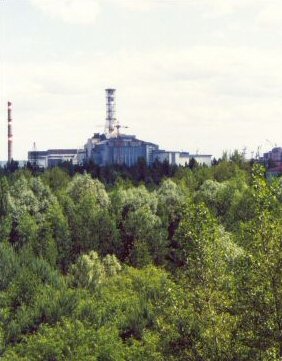Oleh Laupa Junus (Wartawan Utusan)
Satu masa nanti, mungkin rumah kediaman akan menggunakan gas hidrogen sebagai sumber tenaga. Kecanggihan teknologi sudah membuktikannya. Persoalan yang tinggal ialah sama ada anda mampu memilikinya ataupun tidak.
Kini Universiti Kebangsaan Malaysia (UKM) akan memperkenalkan konsep rumah mesra teknologi itu dan menjadi kenyataan dalam beberapa bulan dari sekarang.
Ketua penyelidik projek tersebut, Prof. Dr. Kamaruzzaman Sopian berkata, rumah tersebut yang dikenali sebagai Eco-Wisma Hidrogen Suria menggunakan sistem mesra alam hidrogen sebagai pembawa tenaga.
``Dengan menggunakan sistem mesra alam gas hidrogen sebagai pembawa tenaga, air akan dipecahkan kepada hidrogen dan oksigen dengan menggunakan tenaga elektrik yang dihasilkan daripada sumber-sumber tenaga yang boleh diperbaharui seperti tenaga suria, hidro, biojisim, angin dan hidro,'' katanya.
Dengan penggunaan hidrogen, bahan api fosil seperti petroleum dan gas asli boleh disimpan atau digunakan sebagai bahan mentah untuk menghasilkan pelincir, gentian dan bahan sintetik, racun serangga dan ubat-ubatan.
Menurut Kamaruzzaman, rasional penggunaan gas hidrogen sebagai pengganti sumber tenaga amat banyak.
Beliau memberitahu, pada masa ini hampir 80 peratus daripada sumber-sumber tenaga adalah daripada tenaga fosil seperti petroleum, arang batu dan gas asli.
Terdapat juga sumber tenaga daripada nuklear yang boleh digunakan dalam proses penjanaan elektrik. Selain itu, terdapat sumber tenaga yang boleh diperbaharui termasuklah tenaga suria, tenaga biojisim, tenaga angin, ombak, dan geoterma.
Bagaimanapun manusia tidak boleh terlalu bergantung kepada sumber-sumber tenaga tersebut atas pelbagai sebab.
Antaranya mendatangkan kesan sampingan yang negatif dan kedua, simpanannya semakin berkurangan.
``Pada masa ini hanya lapan negara yang mempunyai hampir 80 peratus simpanan petroleum dunia, enam negara mempunyai 70 peratus simpanan gas asli dunia dan lapan negara yang mempunyai hampir 90 peratus daripada simpanan arang batu dunia.
``Ini menunjukkan bahawa bekalan tenaga fosil dunia hanya berada di kawasan yang terhad dan ini memerlukan kestabilan politik di kawasan tersebut untuk memastikan bekalan tidak terputus,'' tegas beliau.
Kedua, tenaga fosil ini mendatangkan pencemaran yang amat hebat. Ini disebabkan proses pembakaran yang mesti dilakukan. Pembakaran bahan api fosil menghasilkan CO2 (karbon dioksida), SO2 (sulfur dioksida) dan NOx (nitrogen oksida).
Ini merupakan bahan pencemar. Salah satu kesan adalah kesan rumah kaca, iaitu apabila CO2 menutupi ruang atas atmosfera dan menjadi seperti kaca yang memanaskan bumi pada tahap yang membimbangkan.
Ini akan mengakibatkan malapetaka sejagat yang hebat dan jika tidak dibendung akan mengakibatkan krisis alam sekitar yang akan memberikan kesan negatif kepada generasi yang akan datang.
Satu lagi, adalah hujan asid yang terjadi akibat tindak balas gas hasil pembakaran dengan air hujan.
``Oleh kerana masalah ini maka kita perlukan satu sumber tenaga mesra alam dan mapan.
``Tenaga fosil akan habis pada masa yang dekat ini. Petroleum contohnya pada kadar pengeluaran sekarang akan kehabisan dalam masa antara 20 dan 30 tahun lagi. Gas asli dalam masa 50 tahun sahaja lagi. Ini akan mendatangkan krisis tenaga yang hebat,'' kata Kamaruzzaman.
Beliau yang juga profesor di Jabatan Kejuruteraan Mekanik dan Bahan, UKM berkata, penggunaan gas hidrogen merupakan satu alternatif yang akan mengelakkan atau mengurangkan masalah tersebut.
Lebih menarik, gas hidrogen boleh didapati dengan mudah iaitu menerusi pemecahan molekul air. Selain itu, hidrogen merupakan gas yang ringan dan selamat digunakan berbanding gas asli, gas asli cecair dan juga etanol.
Katanya, hidrogen juga boleh disimpan dalam bentuk gas serta boleh dihantar pada jarak yang jauh menggunakan paip gas. Justeru, beliau dan beberapa penyelidik UKM lain telah merangka satu sistem yang boleh menghasilkan gas hidrogen daripada tenaga suria.
Tenaga suria ditukarkan kepada kuasa elektrik menggunakan panel fotovolta. Kuasa elektrik tersebut kemudiannya digunakan untuk memecahkan molekul air kepada hidrogen dan oksigen.
``Peranti yang digunakan untuk menghasilkan hidrogen ini dikenali sebagai elektroliser. Dan hidrogen yang dihasilkan akan disimpan dalam sebuah tangki storan,'' kata Kamaruzzaman.
Gas hidrogen yang disimpan itu akan digunakan untuk dapur masak, sebagai pemanas untuk menjalankan sistem penyamanan udara.
Sistem penyamanan udara ini beroperasi menggunakan sistem kitaran penyerap. Sistem ini berbeza dengan sistem penyamanan udara lazim yang menggunakan sistem mampatan wap.
Hidrogen juga digunakan untuk menghasilkan elektrik dengan peranti yang dikenali sebagai sel bahan api. Sel bahan api adalah peranti elektrokimia yang menggunakan hidrogen dan oksigen sebagai bahan mentah.
Kedua-dua aliran gas ini akan melalui lapisan elektrod dan elektrolit. Hidrogen akan melalui elektrod anod manakala oksigen pada elektrod katod dan akan menghasilkan arus elektrik.
Jika tangki hidrogen penuh dan peralatan lain tidak digunakan maka kuasa elektrik akan dihantar ke grid.
Sebuah meter akan dipasang untuk menentukan jumlah tenaga elektrik yang dihantar ke grid.
Kuasa elektrik ini akan dihantar ke grid Universiti Kebangsaan Malaysia dan dapat menjimatkan penggunaan tenaga di universiti tersebut.
Justeru, kata Kamaruzzaman bagi memanfaatkan gas hidrogen tersebut, sistem rumah Eco-Wisma Hidrogen Suria iaitu kediaman masa depan mesra alam telah direka bentuk untuk menempatkan sistem penjanaan hidrogen daripada tenaga suria.
Reka bentuk rumah tersebut dibina dengan kerjasama Mohd. Hafiz Hasim dan Shah Jafar dari firma Arkitek Urbanisma Sdn. Bhd. yang telah mereka bentuk sistem rumah untuk membuktikan kecekapan dan kemampuan gas tersebut sebagai sumber tenaga.
``Eco-Wisma ini menggabungkan beberapa ciri reka bentuk seni bina penggunaan tenaga sifar seperti pencahayaan siang, pergerakan udara pasif tanpa menggunakan kipas dan penahan sinaran,'' katanya.
Rumah tersebut akan menggunakan hidrogen untuk menjalankan sepenuhnya sistem memasak, hawa dingin dan pencahayaan.
Elektrik daripada sel bahan api akan digunakan untuk menjalankan sistem kitar air hujan dan peranti-peranti elektrik yang lain seperti lampu, kipas dan komputer.
Kombinasi sistem reka bentuk seni bina ini dan sistem penjanaan hidrogen ini dapat membuka jalan kepada sistem mesra alam dan mapan untuk kediaman masa depan.
Sistem ini akan beroperasi sepenuhnya pada bulan September ini.









